It is well established that there is a contradiction between
gravitational physics and quantum mechanics. I shall refer to the former as
macro-physics and to the latter as micro-physics. The laws of one do not apply
to the laws of the other. The behaviour of particles in the micro-physical
world is so unpredictable from the known laws that operate in the
macro-physical world that Niels Bohr reputedly said, “Anyone who is not shocked
by quantum mechanics has not really understood it”. Schrodinger – a pioneer in
quantum mechanics - reputedly said, “I don’t like it and I wish I had had
nothing to do with it”.
Ever since the early part of the last century, there have
been many attempts to reconcile the two – among them string theory and quantum
gravitation. These attempts has so far had no success, which is not to say that
they will not be successful in the future.
There is an apparent contradiction in perception which, in
some ways, parallels that in physics, although the similarity must not be
exaggerated. It is, however, always interesting to draw parallels between
remote fields, even if one does not illuminate the other.
As is common knowledge, in ordinary experience different
visual attributes such as the colour, form and direction of motion of an object
are perceived to be in precise spatial and temporal registration. Let us refer
to this as macro-perception, or macro-vision.
One would be forgiven to assume from this common, daily,
experience that, likewise, the very earliest visual experience, in what we can
refer to as micro-vision – in the
first 150 milliseconds after the appearance of a visual stimulus – its
attributes of colour, form and motion will also be perceived as being in
precise spatial and temporal registration.
But experiments show that this is not necessarily so.
Apparently – dependent upon the task – subjects often perceive colours before
perceiving the form (orientation) of the stimulus, and before perceiving its
direction of motion. The difference in time between perceiving colour and
direction of motion is about 80 milliseconds. This is a huge difference in
neural terms, given that it takes about 0.5 to 1 milliseconds for the nervous
impulse to travel from one nerve cell to the next. And, crucially, this
temporal perceptual asynchrony could not have been (and was not) predicted from
the apparently synchronous perception of different attributes in the macro-world
of perception, just as the properties of the micro-physical world cannot be
predicted from the laws governing the macro-physical world.
In general, physicists working in the macro-world are
capable of developing their theories without paying much attention to the rules
that operate in the micro-world; likewise, those working in micro-physics can
ignore the rules that operate in the macro-world, which accounts for the
enormous success of quantum mechanics.
Equally, neurobiologists concerned with macro-perception can
(and have) generally ignored the rules that govern perception in the
micro-world. This is well and good, except that it raises questions about the
problem of what is known as “binding”, which refers to the bringing together of
separately processed attributes (eg of colour, form and motion) to give us a
coherent visual picture, with no trace of the asynchronous operations evident
in the micro-world.
A similar dilemma faces physics. While it is possible for
one arena of physics to ignore the other, this becomes a problem when things
are projected backwards in time – billions of years ago – when the whole of the
Universe was contained in a particle of infinite mass but of the size
equivalent to a millionth of a millionth of that of an atom (or so physicists
now believe). At such a small, micro-level, it is the rules governing the
micro-world that must have been in operation. How these rules got transformed
into the rules of the macro-world as the Universe began to expand after the
“Big Bang” remains a puzzle.
Similarly, how the micro-perceptual, asynchronously
operating world is transformed into the synchronous world of macro-perception
remains a puzzle. An obvious explanation might be that the responses of cells
are somehow ‘bound’ together to give us our unitary perception. But such a
supposition brings numerous hurdles, among them that of the physiological
mechanisms through which one group of cells in one area “waits” for another
group of cells in a separate, specialized area, to terminate its task. This, so
far, remains an unaddressed problem and no one has yet managed to clarify
successfully how binding occurs.
Dragan Rangelov and I have suggested that the binding
process that leads to the macro-world may lie in interactions beyond the
perceptive cortex, but this is an idea that is entirely conjectural.
Remote though the worlds of physics and perception may seem,
these parallels are worth drawing attention to.
©Semir Zeki

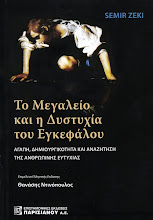
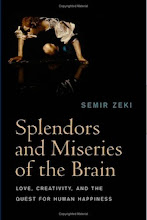
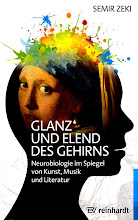
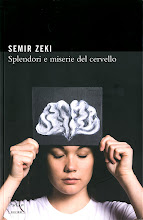



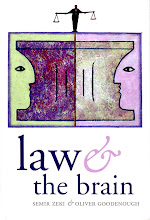
 Contact us
Contact us